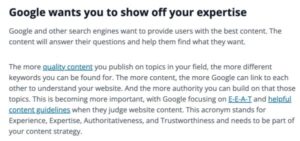
Developers may create effective and efficient Application Programming Interfaces (APIs) with the use of API Design Patterns, which are essential tools. By understanding and using these patterns, you may design scalable, secure, and maintainable, user-friendly APIs. We’ll look at the Top 10 API Design Patterns in this blog post, which can improve your API architecture and make it more reliable and understandable.
What are API Design Patterns?
Common challenges in API development can be effectively addressed through API Design Patterns. These patterns present best practices and standards that guarantee the reliability of APIs and their ease of integration with various systems. Developers can create consistent, predictable, and easily understood APIs by adhering to these standards.
Why Use API Design Patterns?
Using API Design Patterns offers several benefits:
- Consistency: They help maintain uniformity across APIs, making them easier to use.
- Efficiency: Patterns streamline the development process, reducing the time and effort required to build APIs.
- Scalability: They enable APIs to evolve and adjust to shifting requirements without necessitating significant revisions.
- Security: Many patterns incorporate security best practices, protecting APIs from unauthorized access.
Now, let’s dive into the Top 10 API Design Patterns that can enhance your API architecture.
Top 10 API Design Patterns

1. RESTful API
REST (Representational State Transfer) is one of the most widely used API design patterns. It makes use of conventional HTTP methods, including GET, POST, PUT, and DELETE, to communicate with resources. RESTful APIs are stateless, meaning each request from a client contains all the information needed to process it. This design pattern is particularly effective for CRUD (Create, Read, Update, Delete) operations.
2. GraphQL API
GraphQL is an API query language that enables clients to specify and retrieve only the required data. This reduces the amount of data transferred over the network and can improve performance. With GraphQL, you can have a single endpoint that handles all requests, making it more flexible than RESTful APIs.
3. SOAP API
A system called SOAP (Simple Object Access system) is used in web services to exchange structured information. It depends on other application layer protocols, such as SMTP and HTTP, and uses XML as the message format. Because of its reliability and capacity for intricate tasks, SOAP is a good fit for applications at the enterprise level.
4. RPC API
Remote Procedure Call (RPC) APIs allow clients to execute procedures on a remote server as if they were local calls. This pattern can be more efficient in terms of network usage compare to RESTful APIs. However, it may require more effort to implement and maintain.
5. Hypermedia API
Hypermedia APIs incorporate hypermedia links in their responses, enabling clients to navigate the API dynamically. This pattern enhances flexibility and discoverability, enabling clients to find related resources without prior knowledge of the API structure.
6. Versioning API
Versioning is crucial for maintaining backward compatibility when changes are made to an API. Common strategies include URL versioning and header versioning. With this strategy, current clients continue to work seamlessly, even with the introduction of new features.
7. Rate Limiting
Rate limiting serves as a strategy to regulate the number of requests a client is permitted to submit to an API within a designated timeframe. This pattern helps prevent abuse and ensures that the API remains responsive for all users.
8. Caching
Caching improves API performance by storing frequently access data temporarily. When a request is made, the API can return cached data instead of querying the database, reducing latency and server load.
9. Error Handling
Error Handling patterns define how an API communicates errors to clients. Using standard HTTP status codes (e.g., 404 for Not Found, 500 for Internal Server Error) and providing meaningful error messages helps clients understand what went wrong and how to fix it.
10. Documentation
Documentation is an essential part of API design. Well-documented APIs provide clear instructions on how to use the API, including available endpoints, request/response formats, and authentication methods. This pattern enhances the developer experience and encourages adoption.
The most common mistakes to avoid in API design patterns

When designing APIs, avoiding common mistakes is crucial to ensuring usability, performance, and maintainability. Here are some of the most common mistakes developers make in API design and how to avoid them:
Bloated Responses:
Returning excessive data in API responses can lead to increased latency and bandwidth usage. Instead of sending full objects, provide options for consumers to request only the data they need. Implementing pagination can also help manage large datasets effectively.
Poor Documentation:
Neglecting to create comprehensive documentation is a significant oversight. Good documentation should explain each API endpoint, and method, and provide code examples. Without clear documentation, users may struggle to understand how to interact with the API, leading to frustration and increased support requests.
Ignoring Scalability:
Failing to consider scalability during the design phase can result in performance issues as usage grows. It’s essential to design APIs that can handle increased loads, potentially using cloud infrastructure and load balancing to ensure smooth operation under varying conditions.
Using Too Many Endpoints:
Creating numerous endpoints for different functions can confuse users. Instead, focus on developing a few versatile endpoints that can handle multiple operations. This approach simplifies the API and improves performance by reducing the number of requests.
Inconsistent Error Handling:
Inconsistent or unclear error messages can complicate troubleshooting for users. Use standardized HTTP status codes and provide meaningful messages that clearly explain what went wrong. This practice helps users resolve issues more quickly and reduces the support burden.
Lack of Versioning:
Not implementing a versioning system can lead to compatibility issues when changes are made to the API. Versioning allows you to introduce new features or make changes without breaking existing integrations, ensuring a smoother transition for users.
Overly Complex Abstractions:
While abstraction can simplify code, excessive use can lead to complexity that makes the API difficult to use. Strive for a balance that allows for clear, understandable interfaces without unnecessary complexity.
Poor Security Protocols:
Failing to secure APIs can expose sensitive data and lead to unauthorized access. Implement authentication and authorization measures, such as OAuth, and ensure that data is encrypted during transmission to protect against vulnerabilities.
Data Oversharing:
Oversharing data can lead to privacy concerns and an increased load on the backend systems. Limit the data returned by the API to what is necessary for each request, and implement access controls to ensure users only receive data they are authorized to see.
Not Using Proper HTTP Methods:
Using incorrect HTTP methods for API operations can lead to confusion and improper usage. Ensure that the appropriate methods (GET, POST, PUT, and DELETE) are used consistently according to RESTful principles to maintain clarity in how the API should be used.
Conclusion
Understanding and implementing API design patterns is vital for creating effective APIs that meet the needs of both developers and users. By following these top 10 patterns, you can enhance your API architecture, making it more robust, scalable, and user-friendly. Whether you are building a RESTful API, a GraphQL service, or any other type of API, these patterns will guide you in creating high-quality APIs that stand the test of time.
By focusing on API design patterns, you ensure that your APIs are not only functional but also easy to maintain and integrate with other systems. Embrace these patterns to elevate your API development process and deliver exceptional user experiences.
FAQs
API design patterns are reusable solutions to common design problems in API architecture, helping developers build more efficient, scalable, and maintainable APIs.
The Strategy pattern allows an API to select algorithms at runtime, offering flexibility to change the logic behind certain operations without altering the API’s structure.
API design patterns provide best practices for structuring APIs, improving their performance, security, and user experience by ensuring consistency and scalability.
Comprehensive API documentation guides developers in effectively using your API, reducing integration time and support requests.





